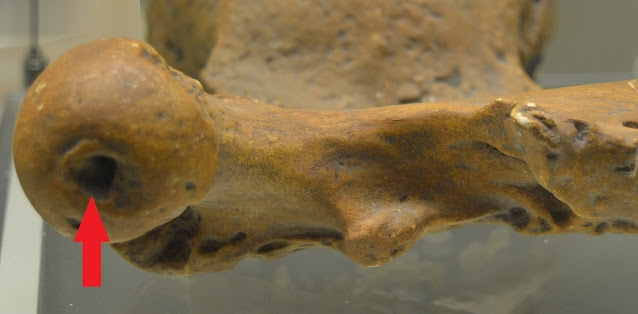Illustration:
 |
Pithecanthropus had LCF
The left femur of Java Man (Pithecanthropus erectus, Homo erectus), specimen from the Darwin Museum (Moscow); view from the medial side (photo by the author). The arrow indicates the fossa of the femoral head - the place of attachment of the LCF. |
.
.
References:
De Vos J. The Dubois collection: a new look at an old collection.
Scripta Geologica. 2004;Special Issue,4:267-85.
Joordens JC, d’Errico F, Wesselingh FP, Munro S, De Vos J, Wallinga J, ... Roebroeks W. Homo erectus at Trinil on Java used shells for tool production and engraving. Nature. 2015;518(7538)228-31.
keywords: ligamentum capitis femoris, ligament of head of femur, ligamentum teres, связка головки бедра, anatomy, paleontology, pithecanthropusZOOLOGY AND PALEONTOLOGY

Comments
Post a Comment